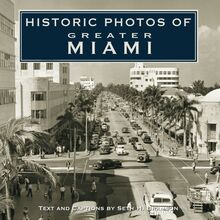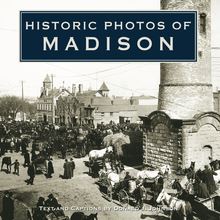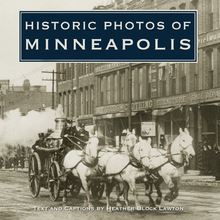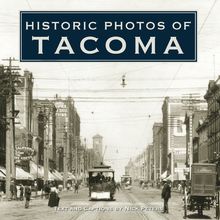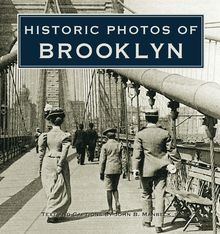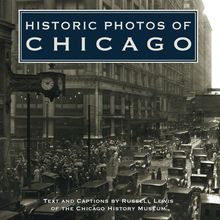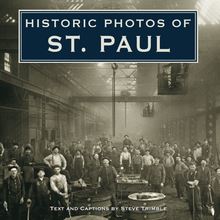Historic Photos of University of Florida Football , livre ebook
195
pages
English
Ebooks
2009
Vous pourrez modifier la taille du texte de cet ouvrage
Obtenez un accès à la bibliothèque pour le consulter en ligne En savoir plus
Découvre YouScribe en t'inscrivant gratuitement
Découvre YouScribe en t'inscrivant gratuitement
195
pages
English
Ebooks
2009
Vous pourrez modifier la taille du texte de cet ouvrage
Obtenez un accès à la bibliothèque pour le consulter en ligne En savoir plus
Publié par
Date de parution
01 juillet 2009
Nombre de lectures
2
EAN13
9781618584441
Langue
English
Poids de l'ouvrage
9 Mo
When the Florida Agricultural College in Lake City became the University of Florida and moved south to Gainesville in 1906, it had a very fledgling football team, although worthy opponents were difficult to find. Little by little, as the school increased in size and reputation, its football team attracted higher-performing athletes and sterner opponents until it was willing to play any team in the country.
In 1966, the team had its first Heisman Trophy winner, but it was not until 30 years later that UF won its first national championship. Since then UF has chalked up two more Heisman Trophy winners and two more national championships.
Historic Photos of University of Florida Football chronicles the rise of one of the premier football programs in the country through hundreds of black-and-white photographs, each of them captioned and with introductions. The book includes photos of the university and the surrounding community to which the "Fightin’ Gators” have become so much an integral part.
Publié par
Date de parution
01 juillet 2009
Nombre de lectures
2
EAN13
9781618584441
Langue
English
Poids de l'ouvrage
9 Mo
HISTORIC PHOTOS OF
UNIVERSITY OF
FLORIDA FOOTBALL
T EXT AND C APTIONS BY K EVIN M C C ARTHY
By the 1940s the Gators football stadium, Florida Field, stood in the midst of athletic facilities that included a baseball field, tennis courts, and a track-all of which allowed students and faculty to spend much of their free time outdoors, exercising and witnessing sporting events in comfort.
HISTORIC PHOTOS OF
UNIVERSITY OF
FLORIDA FOOTBALL
Turner Publishing Company
200 4th Avenue North Suite 950
Nashville, Tennessee 37219
(615) 255-2665
www.turnerpublishing.com
Historic Photos of University of Florida Football
Copyright 2009 Turner Publishing Company
All rights reserved.
This book or any part thereof may not be reproduced or transmitted in any form or by any means, electronic or mechanical, including photocopying, recording, or by any information storage and retrieval system, without permission in writing from the publisher.
Library of Congress Control Number: 2008908519
ISBN-13: 978-1-59652-514-6
Printed in China
09 10 11 12 13 14 15 16-10 9 8 7 6 5 4 3 2 1
C ONTENTS
A CKNOWLEDGMENTS
P REFACE
E ARLY R OADS TO G RIDIRON G REATNESS (1853-1929)
A N EW S TADIUM AND H ARD T IMES (1930-1945)
P OSTWAR S UCCESS (1946-1969)
D ISAPPOINTMENTS AND T RIUMPHS (1970-1996)
N OTES ON THE P HOTOGRAPHS
The first unofficial coach of the football team when the school was in Lake City, Florida, was Professor James Farr (second from left, bottom row, in this 1911 photograph). Farr was also the head of the English Department. The president of the school during the 1901-1902 school term, Dr. T. H. Taliaferro, offered to help Farr in coaching the team if time would allow.
A CKNOWLEDGMENTS
This volume, Historic Photos of University of Florida Football , was possible only through the cooperation of University of Florida archivists Carl Van Ness and Joyce Dewsbury. The archives at the Florida Department of State in Tallahassee were also invaluable in the search for old photographs. It is with great thanks and appreciation that we acknowledge the valuable contributions of officials at both institutions for their generous support. The photographs within this volume were chosen from the collections at the University of Florida and at the Florida Department of State and are used by permission.
P REFACE
Football success would have been hard to predict for the University of Florida in its early years. Especially after its 1904 team in Lake City was outscored 224-0. Once the school moved to its present location in Gainesville, Florida, it began to do better and then still better, beating a school like Florida Southern 144-0 and holding its own against Southern powerhouses Alabama, Georgia, and Georgia Tech. Like that of many schools, the progress has been slow and often plagued by setbacks, but-with a commitment to excellence in all fields, both academic and athletic-that progress has culminated in a consistently winning program.
The photographs on the following pages trace the history of football at what is today one of the true bastions of gridiron superiority. They point out how UF has won three national championships in the last three decades, has produced three Heisman Trophy winners, and has sent forth hundreds of ballplayers to excel in the National Football League and, even more important, in the fields of business, education, law, medicine, religion, and service.
These images have been selected from archives in Gainesville and Tallahassee and have been captioned with short explanations describing the scenes depicted. With the exception of touching up imperfections that have accrued with the passage of time and cropping where necessary, no changes have been made. The focus and clarity of many images are limited by the technology and the ability of the photographer at the time they were taken. In many cases, the photos have not been seen by the public for decades, if ever. Now with the Gator Nation exceeding 250,000 living alumni and with the student body more than 50,000, interest in all things associated with the University of Florida is high.
While many people around the nation and world associate the University of Florida with the Fightin Gators, it is my fondest hope that interest in the football program will extend to interest in the school s many academic accomplishments. And that pride in being associated with the school will lead to even more highly qualified students studying there, adding to the number of alumni and friends supporting the institution s many efforts to make this world a better place to live.
As the state s oldest, largest, and most comprehensive university, the University of Florida is the nation s fourth-largest. Its more than 50,000 students study in ideal surroundings of more than 2,000 acres in a city that prides itself on beauty and culture. The athletic teams in general, and the football program in particular, have done much to put UF on the sports map. In fact, only UF and UCLA appear in the top ten in each of the last 25 national all-sports rankings. More important, UF s 89 percent graduation rate among athletes in recent years has made clear to students and alumni alike how important the college diploma is. The high demands that the more than 4,000 faculty place on the students, including the athletes, ensure that a UF degree is a valuable commodity in preparing them for the post-school world.
Here then is the story of the many successes and some failures of the storied UF football program, how the tears of desperation in the early years have consistently given way to the euphoria associated with high rankings and victories.
- Kevin McCarthy
The simple sign on the corner of University Avenue and 13th Street after the school opened in Gainesville in 1906 would become more elaborate as student numbers increased. By 2006 the university had more than 50,000 students, many of whom would be part of the 90,000 and more fans attending a home game each fall. The school has been one of the strongest economic forces in Alachua County since the early 1900s.
E ARLY R OADS TO G RIDIRON G REATNESS
(1853-1929)
The University of Florida traces its beginnings to 1851, when the Seminary Act of 1851 established two seminaries for the newly established state. Where exactly those two schools, one east of the Suwannee River and one west of that river, would be was to be determined by which towns were willing to help fund them. The East Florida Independent Institute, which had opened in Ocala south of Gainesville in 1852, became the East Florida Seminary in 1853, whereas Tallahassee became the site of the second seminary, the one that would become the Florida State College and-much later-Florida State University.
The East Florida Seminary struggled until 1861, when it closed at the outbreak of the Civil War. The school reopened in Gainesville after the war and allowed students as young as twelve or thirteen to enroll. Both boys and girls attended the school. According to school regulations, students were not allowed to drink liquor, smoke, or enter a billiards room, saloon, or house of ill-fame.
Meanwhile the Florida Agricultural College opened in 1884 in the town of Lake City about 40 miles north of Gainesville. At first only men were allowed to attend the school, the first in Florida to call itself a college. Women began attending in 1894. Officials changed the name of the school to the University of Florida in 1903. In the following year the University of Florida Athletic Association was founded, and several football games were played (and lost), but UF s official media guide does not include those games. The East Florida Seminary and the Florida Agricultural College were both antecedents of UF.
The school was moved to Gainesville after passage of the Buckman Act of 1905, much to the displeasure of the local people in Lake City, and classes opened up at the new campus in 1906. Women were not allowed to take classes there during the regular academic year, but instead were to study at the State College for Women in Tallahassee. UF prospered and grew each year as it attracted more and more students and built up the campus. By 1927, the Florida land boom burst, and the fortunes of the state began to decline. It would take a decade for the university to get back on its feet.
The town of Gainesville, which had been established in 1854, was incorporated in 1869, four years after the Civil War ended. By 1884, when this sketch was made, the town had about 2,000 residents, along with fourteen cotton gins, three railroads, and many citrus and vegetable farms. What it did not have was a college or university. Those interested in a higher education looked to Lake City to the north, which did.
The immediate predecessor of the University of Florida in Gainesville was Florida Agricultural College (FAC) in Lake City to the north. Established in 1884, the school was located in Lake City partly because of the town s excellent climate, and partly, in the words of education officials, because of the community s high reputation for morality and love of order.
Another predecessor of UF and of the Gator football team was the team fielded by East Florida Seminary (EFS) in Gainesville, shown here in 1902. The school opened in 1854 in Ocala, but moved north to Gainesville in 1866, after the Civil War. The school had 71 students in 1866 and 225 in 1904. The football team played other Florida schools.
A very early football team at the Florida Agricultural College was the 1902 team shown here. Official records of the Gator football team don t begin until the school reopened in Gainesville (1906), but the FAC team played (and lost) a game to Stetson University in 1901, presumably because a stump in the middle of the field prevented the Gators from scoring. FAC also lost a game in 1902 to Stetson, 6-5.
A sketch of the planned campus of the University of Florida in Gainesville shows wide, open





